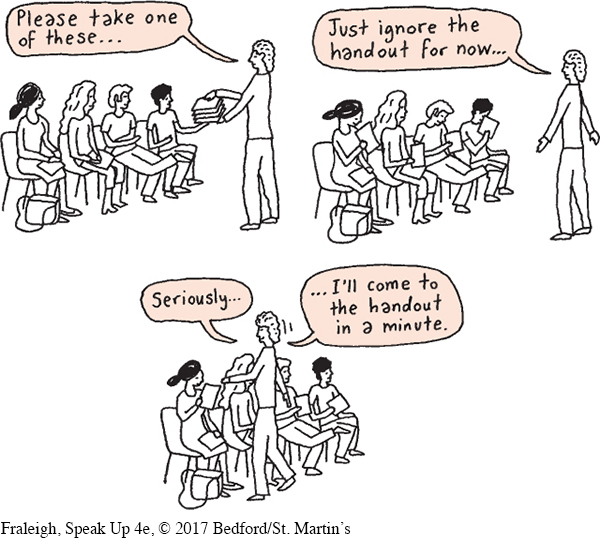Control Audience Interaction with Your Aids
To avoid distracting your audience unnecessarily, do not show or play an aid until you are ready for listeners to see or hear it. When you’re finished presenting the aid, put it away or shut it off. This strategy keeps your audience’s attention focused on you instead of your aids—
You can control audience interaction with your aids in several ways. For example, if you are using an audio recording, cue up the desired track ahead of time so that you can play it promptly when you’re ready. Avoid playing background music (from an MP3 player or a cell phone) during your speech. If you plan to tape or pin a chart to the wall, do so in advance, but fold half of the display over the other half and tape or pin it down. That way, you’ll block the audience’s view until you are ready to refer to the chart in your speech, at which point you’ll undo the tape or pin.
Use the same technique when displaying a series of images on successive sheets of a flip chart. Insert blank sheets between each sheet containing an image. When you finish with one image, flip the page so that your audience sees a blank page. This technique also works well with overhead transparencies, slide shows, and computer images in a PowerPoint presentation. Remove each image after you’ve discussed it, leaving a blank screen, or turn off the equipment and refocus the audience on you.

Page 429
What about handouts? To ensure that they’re informative rather than distracting, issue clear instructions about how to use them. For example, pass out handouts facedown, and tell the audience not to look at them until you say so. Explain that you don’t want listeners to get ahead of you. Of course, there always will be someone who ignores this instruction and takes a peek. To keep audience members focused on your speech, watch them during your presentation. Look for listeners who are paging through the handouts. Then adjust your delivery by increasing your volume or moving closer to those audience members to draw their attention back to you.
